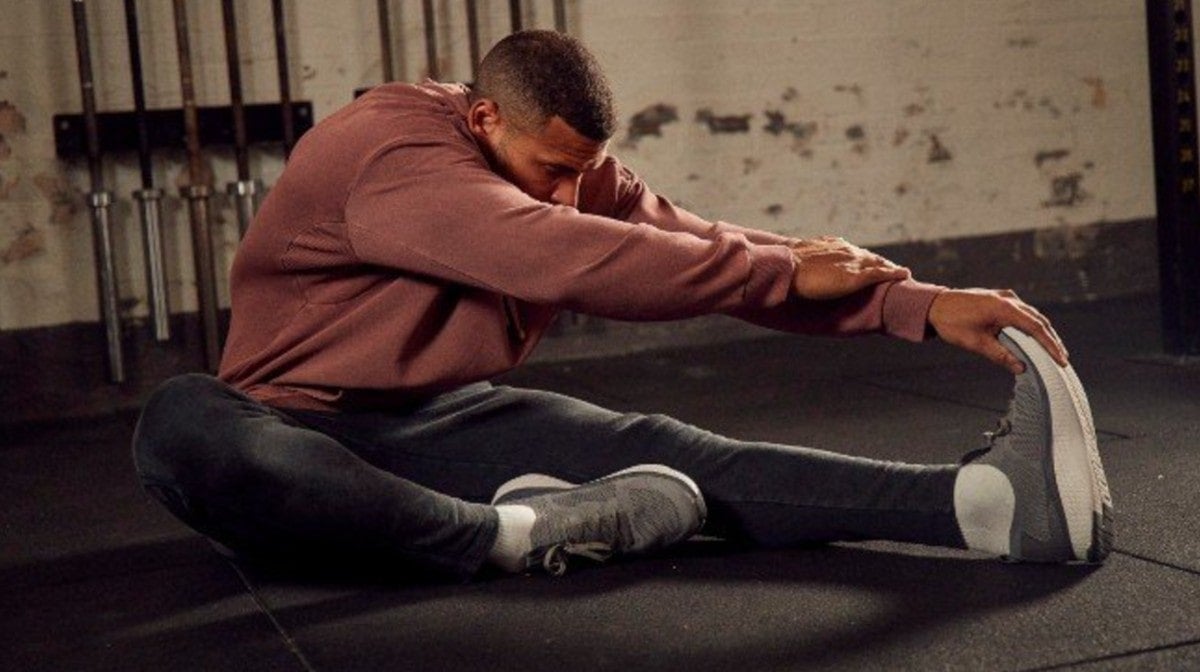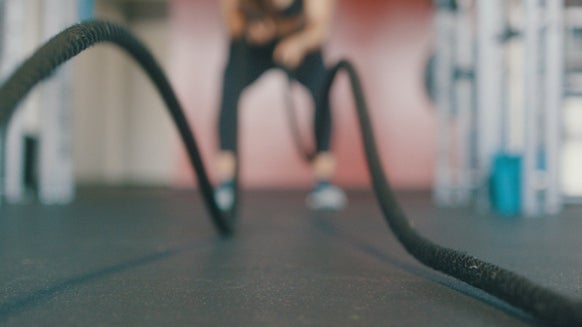7 Best Hamstring Stretches

Developing strength and power in the hamstrings is key to the success of any athlete, however, many individuals neglect the necessary mobility work required to remain flexible and injury-free. Maintaining good flexibility in your hamstrings is a prime way to reduce the risk of a strain during exercise. Try out these stretches to make sure your hamstrings stay bulletproof;
1. Lying Hamstring Stretch
This stretch allows you to slightly alter which of the hamstrings are being preferentially lengthened/stretched by rotating your foot inwards or outwards, and thus you are able to develop more mobility in each of the hamstring muscles individually.
- Lying supine (with your back flat on the floor) with both legs straight, elevate one leg until you can hold it.
- Keep the other leg flat on the floor and use your arms to facilitate a greater stretch in the elevated leg.
- Only go as far as you can feel a stretch whilst keeping the leg straight.
- Hold the position for around 10 seconds before repeating on the opposite leg.
2. Sit and Reach
This method really exposes any deficiencies in your existing hamstring mobility. With a straight knee and hip flexion, the biceps femoris long head, which runs across both the knee and hip joint, is forced into a stretched position, which can be difficult to achieve with other stretches.
- Sit on the floor with your legs laid straight in front of you, with the back of your knee pressed to the floor.
- Bending only at the hips (allowing the lower back to also round), lean forwards towards your toes.
- Reach for your toes and hold the position where you begin to feel a stretch in your hamstrings (do not try to force yourself beyond your limits as this may result in injury!).
- Hold for around 10 seconds before relaxing.
- Perform multiple rounds, similar to a sets/reps/rest plan (i.e. 3x10secs, 15secs rest).
3. Hurdler Stretch
This stretch not only provides a good stretch for the hamstrings of the straight leg but also some stimulus to the hip muscles of the opposite leg. Of course, you’ll perform this one on both sides, so you’ll be getting additional benefits from maintaining and improving your hip mobility too.
- Start sitting on the floor with your legs laid in front of you with the back of your knees against the floor.
- Shift your right foot so that the sole of the foot is against the side of your left knee/inner thigh (resembling a ‘p’ or ‘b’ shape).
- Keeping your left leg straight, lean forward with both hands, placing your hands next to/on your outstretched leg by your foot.
- Hold this position for around 10 seconds before repeating on the opposite leg.
4. Single Leg Elevated Hamstring Stretch
This one is slightly tamer, as it is very easy to manipulate how much or how little of a stretch you put onto your hamstrings. Similar to the lying hamstring stretch, this one allows you to slightly preferentially alter the targeted hamstring muscle by internally or externally rotating your hip (turning your foot inwards or outwards).
- While standing, elevate one foot onto a stable surface with a straight leg (try some stairs, as it’s easier to choose an appropriate height).
- Similar to the hurdler stretch, lean forwards towards the foot of the outstretched leg.
- Hold the position where you feel a stretch for around 10 seconds before releasing and repeating on the opposite leg.
5. Standing Bilateral Hamstring Stretch
This one can provide a deep stretch to your hamstrings, depending on how deep you are able to push yourself. The bending at the hip and lower back will also result in a stretch to the quadratus lumborum in the lower back too, enhancing the mobility benefits of this stretch! Make sure that you’re emphasising the stretch on your hamstrings and not your lower back for optimal results!
- Start standing, and cross one foot to the other side of the opposite foot (so the outside of each foot is next to each other).
- Slowly lower your torso, bending only at the hips while keeping your knees straight.
- Use support such as a railing or work surface if you struggle to maintain your balance.
- Hold the position where you feel a stretch for around 10 seconds before alternating legs.
6. Nordic Hamstring Curl
Muscles are made up of base components known as sarcomeres, which together form fascicles, which ultimately form the muscle itself. While it is recognised that longer fascicles (which can result from stretching) play an important role in injury reduction, there is a wide base of research suggesting that this is nearly redundant if the muscles are not also strong. The Nordic hamstring curl offers eccentric overload to the hamstrings, ensuring that sarcomeres are added in parallel and in series (adjacent to each other, and length-ways) – resulting in longer and stronger muscle fibres. While this exercise may be considered to be more of a resistance exercise than a stretch, it is potentially the best way of improving the length and mobility of your hamstrings, whilst also providing the benefit of increased strength — the ultimate way to bulletproof your hamstrings!
- Start in a kneeling position, with your hips extended (so you’re only bent at the knee).
- Find a suitable anchor for your feet/ankles – ask a friend/partner to use their bodyweight and hold you down, or find a secure and stable item/surface that will do the job (make sure your ankles are protected so you don’t get injured).
- Contracting your hamstrings against the anchor (as if you are trying to flex your knees), slowly lower your body to the floor, whilst bending minimally at the hip.
- Use your arms to help press yourself back to the start position (it’s all about the eccentric phase in this exercise!).
- Perform 3-5 sets of 3-5 reps, around 2-3 times per week for optimal adaptations.
7. Proprioceptive Neuromuscular Facilitation (PNF)
PNF is an advanced technique for improving mobility and requires a partner to assist you. There are 3 different types of PNF; 1) Hold-Relax, 2) Contract-Relax, 3) Hold-Relax with agonist contraction. This type of stretching can be particularly good for making acute, short- term gains in your hamstring mobility, which over time can result in greatly improved mobility.
Hold-Relax:
- Using the lying hamstring stretch (1), have the partner help you hold a passive stretch for 10 seconds.
- The partner then applies force (facilitating further hip flexion), and the athlete must ‘hold’ the position, isometrically contracting their hamstrings so that no movement occurs.
- This is held for 6 seconds, prior to a further passive stretch being held for 30 seconds (to a greater degree than the initial passive stretch).
Contract-Relax:
- This method begins with the same initial passive stretch, held at the point where a stretch is felt for 10 seconds.
- The athlete then concentrically contracts their hamstrings against the resistance applied by their partner, until the leg is straight with the hip extended.
- A further passive stretch is applied for 30 seconds, again greater than the initial passive stretch.
Hold-Relax with agonist contraction:
A passive stretch is applied for 10 seconds, then the partner applies flexion force again.
The athlete then contracts the hamstrings in addition to the passive stretch being applied by their partner.
Finally, a deeper passive stretch should be applied by the partner.








